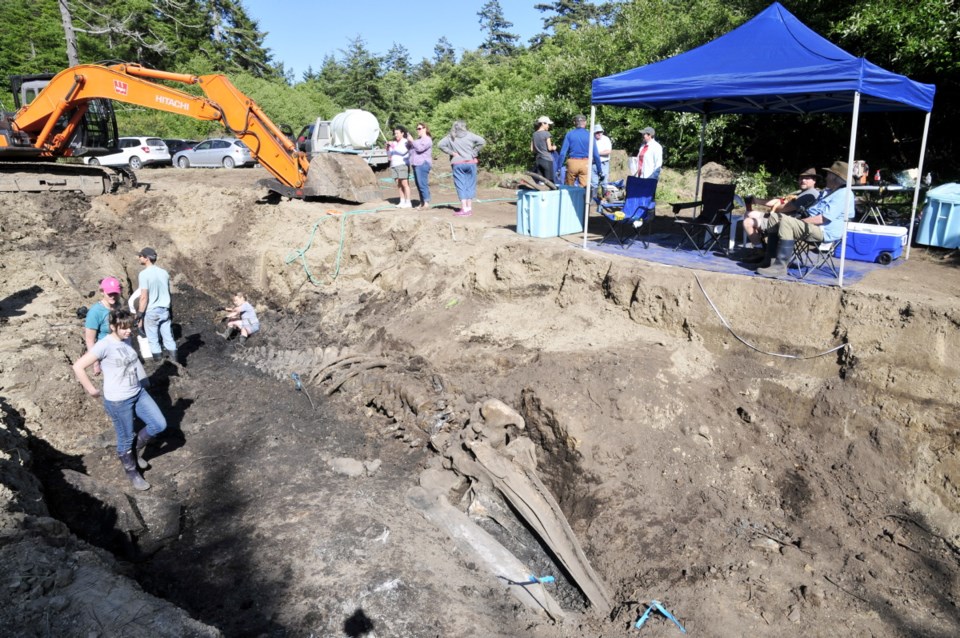Sharon Cooper remembers the deep sadness she felt looking at the carcass of a young grey whale that washed up on the shore off East Sooke Park.
Curious crowds came to see the whale in the summer of 2010. Someone carved their initials in its skin, its body was desecrated by people wanting souvenirs.
“I was very sad — he was a huge, majestic, beautiful animal and he was getting carved and having pieces busted off,” said Cooper.
“It broke my heart and I knew I could do something.”
Cooper, 44, asked her boyfriend and others to help get the whale home to the Scia’new (Beecher Bay) First Nation and give it a respectful burial.
Officials at the Department of Fisheries and Oceans contacted Brian Kingzett, manager of the Deep Bay Marine Field Station to see if the whale’s skeleton could be put on display.
The whale was buried on a quiet part of the Scia’new land in a way that kept the bones intact as the flesh rotted.
On Sunday, Cooper smiled down at the exposed skeleton which she calls “my friend,” at the bottom of a temporary grave, two metres deep.
“I’m elated,” she said. “I had a connection with him immediately.”
When an excavator first exposed the bones on Saturday, Cooper said she felt “that we’d finally brought him the honour that he deserved. I think that’s the most important part.
“When I saw him on the beach, I made him a promise that I was going to do something and...wow.”
Cooper feels the whale had come home.
Volunteers from Vancouver Island University and others who donated to the whale skeleton’s preservation helped retrieve the 145 bones that make up the complete skeleton.
Huge chunks of the spine, which look like boat propellors, are handed from volunteer to volunteer to be labelled, washed and readied for transport up to the marine station.
They had started with the tail and worked their way up to the long ribs and bigger chunks of spine. The job was expected to be done by sunset on Sunday, said Kingzett.
This grey whale was emaciated when he died, said Kingzett.
The great mammals migrate from their feeding grounds in the Bering Sea to the Baja peninsula, where they breed and give birth. They don’t eat during the southern part of their migration, said Kingzett.
The skeleton will weigh about a tonne when its dried out, he said. There are plans to suspend the skeleton in the open stairwell at the field station.
“I’ve done a lot of crazy things in my marine biology career but this has got to be the most exciting,” said Kingzett, grinning as he watched the skeleton emerge, piece by piece, from the earth.
“This has brought a huge group of people together who are really engaged in the project,” Kingzett said.
Volunteer Ken Magnus, a 70-year-old retired radiologist, said he showed up because of his interest in marine biology. The bones “are in excellent condition,” said Magnus, who during his career shot thousands of images of bones using x-rays.
“It’s been fun, there are a lot of volunteers and the smell is not too bad,” he said, wrinkling his nose slightly.
Kingzett set up a “buy a bone” campaign to collect public donations, and only 34 bones remain available for sponsorship. There have been large donations from the Underwater Harvesters Association and Jamie’s Whaling Station of Tofino. A Qualicum Bay couple sponsored the skull and were among the volunteers that turned out for the dirty work.
“It’s not just about the display — this is about the journey this whale has taken to get there,” said Kingzett.
To contribute to the whale project, go to http://www.viu.ca/whale.



